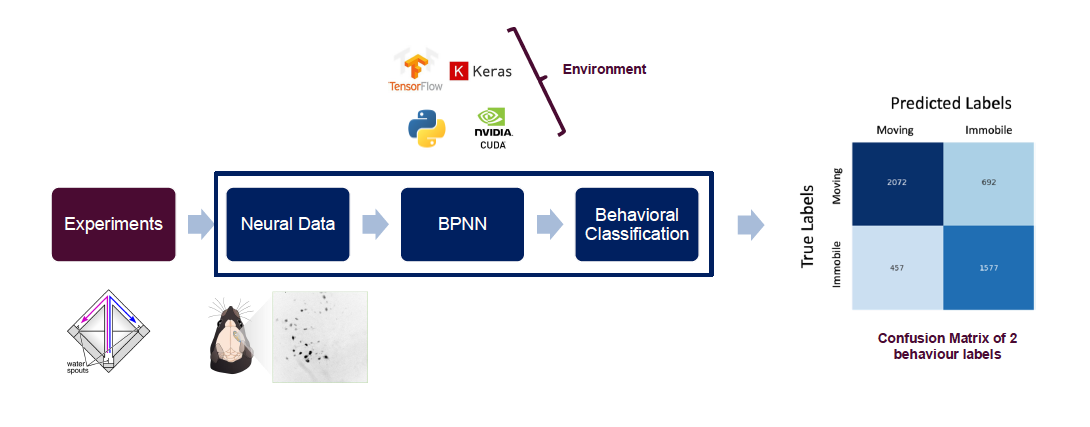The Behavioural Prediction Neural Network (BPNN) toolkit
The BPNN was developed for the MSc Thesis "Direct Behaviour Prediction from Miniscope Calcium Imaging Using Convolutional Neural Networks" as part of the Health Informatics Master's Programme at the Karolinska Institute and Stockholm University.
Keywords: Deep Learning, Calcium Imaging, Behavioural Analysis
Objective
To uncover neural dynamics underlying behavior we developed a Convolutional Neural Network (CNN) to analyze behavioral and neural imaging data collected from cognitive experiments with mice. To read the full Thesis or view the code repository, please follow the links below.
Abstract
Background: Neurodegenerative diseases, including Parkinson's, affect millions worldwide, driving neuroscience research to develop effective and personalised treatments. Techniques like calcium imaging are used to link neural activity with behaviour in animal models, but they often face challenges such as complex workflows often limited to extracting cell body information without directly inferring any behavioural correlates.
Aim: To address these challenges, this Thesis employs CNNs to simplify calcium imaging analysis and directly infer behavioural correlates.
Methods: Previously collected calcium imaging datasets from behavioural assays were repurposed to train the BPNN, a CNN-based tool. Its performance was compared with existing methods in neuroscience research.
Results: Despite challenges like overfitting, which may have been caused by technical discrepancies or other biological artefacts produced during the calcium imaging recording sessions, the BPNN demonstrated competitive performance in predicting animal behaviour, achieving an F1-score of 0.56 compared to 0.41 from an existing tool.

Confusion matrix on the BPNNt when provided with one CI video as input with 6 behaviour labels.
Note | A: This is the configuration of the BPNN that provides the best possible output out of all illustrated configurations. The confusion matrix allows us to visualise to what extent the model has been able to correctly predict mouse behaviour based on the provided data for validation. The F1-score per label has been added to demonstrate which behaviour classes the BPNNt is performing the best and for which ones the weakest.
B: The label class distribution from the calcium imaging dataset of Animal 3 and the experimental session from Day 11 is provided to give more context on how the percentage of each behaviour label (high or low representation) affects the performance (high or low F1-score) of the model.
Conclusion: The BPNN model shows promise in linking neural activity with behaviour. However, further research is required to address current technical and biological limitations to reaffirm the postulations of this study.
Academic Information
This thesis was conducted under the supervision of Professor Konstantinos Meletis at the Karolinska Institute, Department of Neuroscience, and Professor Panagiotis Papapetrou from the DSV Department at Stockholm University. Grade received: 36/40.
